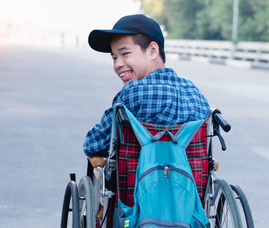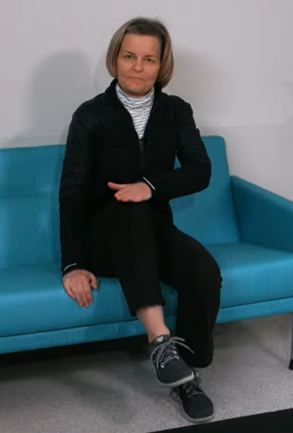|
Ataxia is a movement disorder caused by problems in the brain. When you have ataxia, you have trouble moving parts of your body the way you want. Or the muscles in your arms and legs might move when you don’t want them to. The word ataxia actually means “without coordination.” Ataxia isn’t a disorder or a disease itself -- it’s a sign of other underlying disorders or diseases. Doctors have discovered anywhere from 50 to 100 different ataxias. They are grouped into categories based on what causes them, or based on which part of the body they affect. How can Body Balance Physical Therapy help you? We have a Doctor of physical therapy that is a specialist in Neurological conditions who can help you build your strength and maintain independence. It doesn’t matter what stage you’re in, physical therapy WILL MAKE A DIFFERENCE! To learn more about our specialist and how we treat click here Neurologic Physical Therapy. Here are some of the different types of Ataxia. Reading through this can help give you a broader knowledge of what type you have or what more specific question to ask your doctor to get a proper diagnosis. Once you are diagnosed the best thing you can do next is ask your doctor for a prescription for physical therapy. The sooner you get help, the stronger you will be! Cerebellar Ataxia Your cerebellum is the part of your brain that’s in charge of balance and coordination. If part of your cerebellum starts to wear away, you can develop cerebellar ataxia. Sometimes it can also affect your spinal cord. It’s the most common form of ataxia. Symptoms of cerebellar ataxia include: Sensory Ataxia Sensory ataxia is the result of damage to nerves in your spinal cord or your peripheral nervous system. That is the part of your nervous system outside of the brain and spinal cord. When you have sensory ataxia, you have less sensation in your feet and legs from the nerve damage, so you have less feedback from your brain telling you where your body is in relation to the ground. It’s also called proprioceptive ataxia. Symptoms of sensory ataxia include:
Vestibular ataxia affects your vestibular system. This system is made up of your inner ear and ear canals, which contain fluid. They sense the movements of your head and help with your balance and spatial orientation. When the nerves in your vestibular system are affected, you can have the following problems:
WebMD Medical Reference Sources © 2020 WebMD, LLC. All rights reserved. Jennifer Millar is a physical therapist who works with John Hopkins Medicine. She will show you the benefits of exercise for managing the symptoms of ataxia. She will further describe and demonstrates the exercises that individuals with ataxia can do to improve their core strength and balance. Click here: youtu.be/BMhxywDhhrw
0 Comments
Leave a Reply. |
AuthorDr. Paul Hendricks Archives
March 2022
Categories
All
|
(512)261-8699
info@bodybalancelakeway.com
Body Balance Privacy Policy 2020
DISCLAIMERThe information on this site is intended for informational and educational purposes only and in no way should be taken to be the provision or practice of physical therapy, medical, or professional healthcare advice or services. The information should not be considered complete or exhaustive and should not be used for diagnostic or treatment purposes without first consulting with your physical therapist, occupational therapist, physician or other healthcare provider. The owners of this website accept no responsibility for the misuse of information contained within this website.
DISCLAIMERThe information on this site is intended for informational and educational purposes only and in no way should be taken to be the provision or practice of physical therapy, medical, or professional healthcare advice or services. The information should not be considered complete or exhaustive and should not be used for diagnostic or treatment purposes without first consulting with your physical therapist, occupational therapist, physician or other healthcare provider. The owners of this website accept no responsibility for the misuse of information contained within this website.



 RSS Feed
RSS Feed